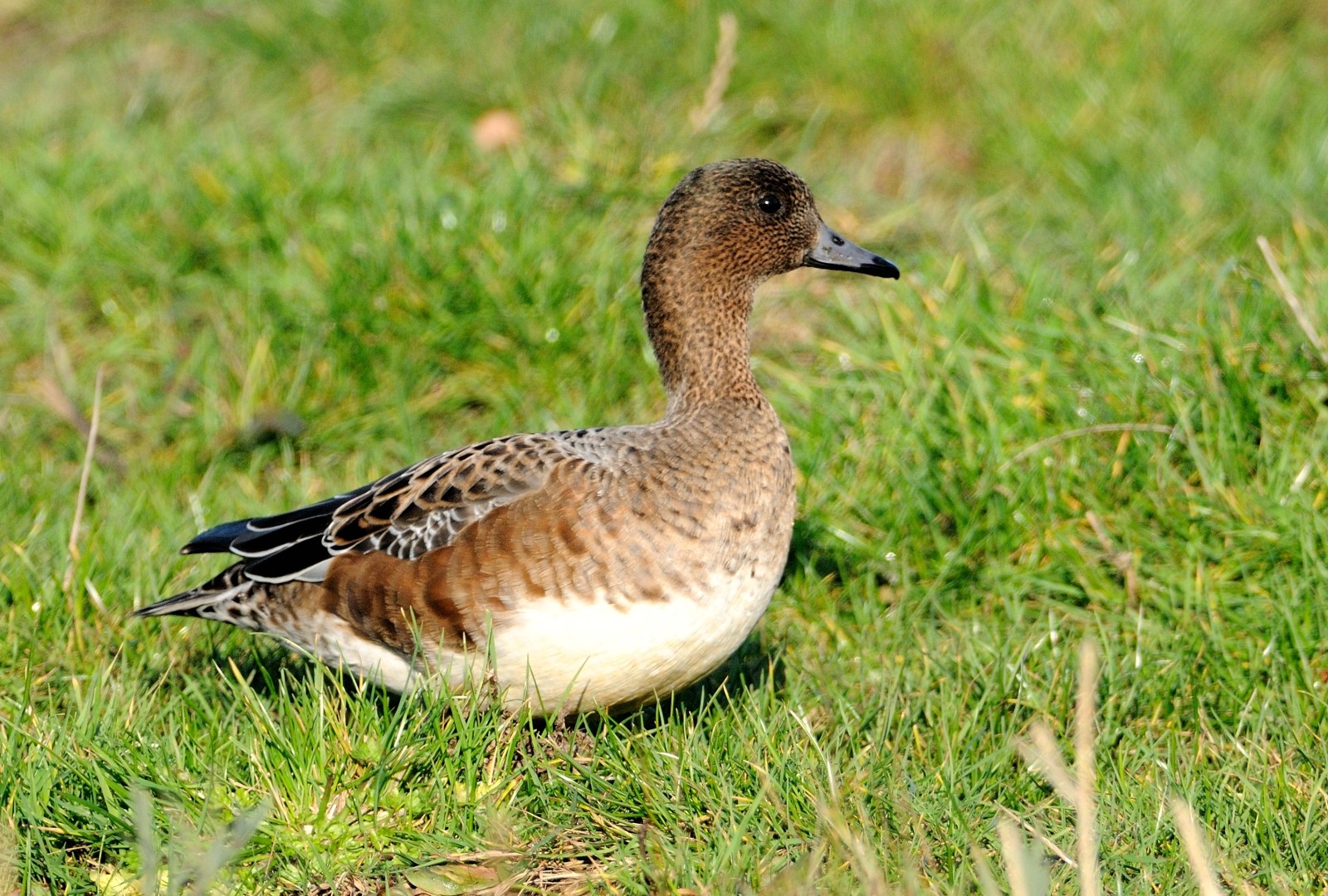Eurasian Wigeon
A species of Anas Scientific name : Mareca penelope Genus : Anas
Eurasian Wigeon, A species of Anas
Botanical name: Mareca penelope
Genus: Anas
Content
Description General Info
Description
The eurasian Wigeon is a medium-sized duck with its primary breeding grounds in northern England and Scotland. It is often seen near ponds and marshes where the duck searches for edible aquatic plants. Due to its declining numbers in Europe, the duck is listed on the amber list for species.
Size
51 cm
Life Expectancy
18 years
Nest Placement
Ground
Clutch Size
6 - 12 eggs
Feeding Habits
Eurasian Wigeon predominantly consume aquatic and terrestrial vegetation, including leaves, stems, roots, rhizomes, and seeds. They exhibit dabbling behavior for subaquatic feeding and also forage on land, eating grasses, grains, and seeds. In North America, they are known to feed on various plant foods such as wigeon grass, and in Eurasia, on alkali-grass and glasswort, among others. During the breeding season, their diet includes invertebrates, such as mayflies and beetles, with females and ducklings relying more heavily on such protein sources.
Habitat
Eurasian Wigeon primarily resides in open wetlands like marshes, ponds, and lakes in regions adjacent to northern forests or tundra. These habitats are replete with insects and invertebrates, essential during their breeding season. Their environmental preferences include wet grasslands and areas with some taller vegetation. Outside of breeding periods, eurasian Wigeon is adaptable, occupying estuaries, bays, and agricultural wetlands. They migrate via coastal areas and unfrozen high-altitude lakes, displaying a low to medium altitude adaptability across different climates.
Nest Behavior
The female eurasian Wigeon builds the nest, then lays and incubates eggs. Parental care involves both parents protecting the ducklings.
Nest Characteristics
Eurasian Wigeon's nest is a shallow ground depression near a water body, often a pond or marsh, lined with grass and female's breast down.
Dite type
Herbivorous
General Info
Feeding Habits
Bird food type
Sounds
Call
Recording location: Belgium
Call
Recording location: Belgium
Behavior
Eurasian Wigeon exhibit dynamic behavior that changes with seasons. In spring, during courtship, they engage in visual and acoustic displays, like lifting wingtips and piping calls, to attract mates. Upon pairing, males guard females but leave after egg-laying, while females build nests and rear ducklings. They show limited territoriality, often nesting in colonies. Post-breeding, males molt and migrate in flocks and change plumage, retaining the characteristic white wing patch. Females and juveniles join males later, and during migration and winter, flocks are generally peaceful, with some male dominance observed in boundary interactions and pre-breeding displays.
Distribution Area
It breeds in the northernmost areas of Europe and the Palearctic. It is the Old World counterpart of North America's American wigeon. It is strongly migratory and winters further south than its breeding range. It migrates to southern Asia and Africa. In Great Britain and Ireland, the Eurasian wigeon is common as a winter visitor, but scarce as a breeding bird in Scotland, the Lake District, the Pennines and occasionally further south, with only a handful of breeding pairs in Ireland. It can be found as an uncommon winter visitor in the United States on the mid-Atlantic and Pacific coasts. It is a rare visitor to the rest of the United States except for the Four Corners and the southern Appalachians. 
